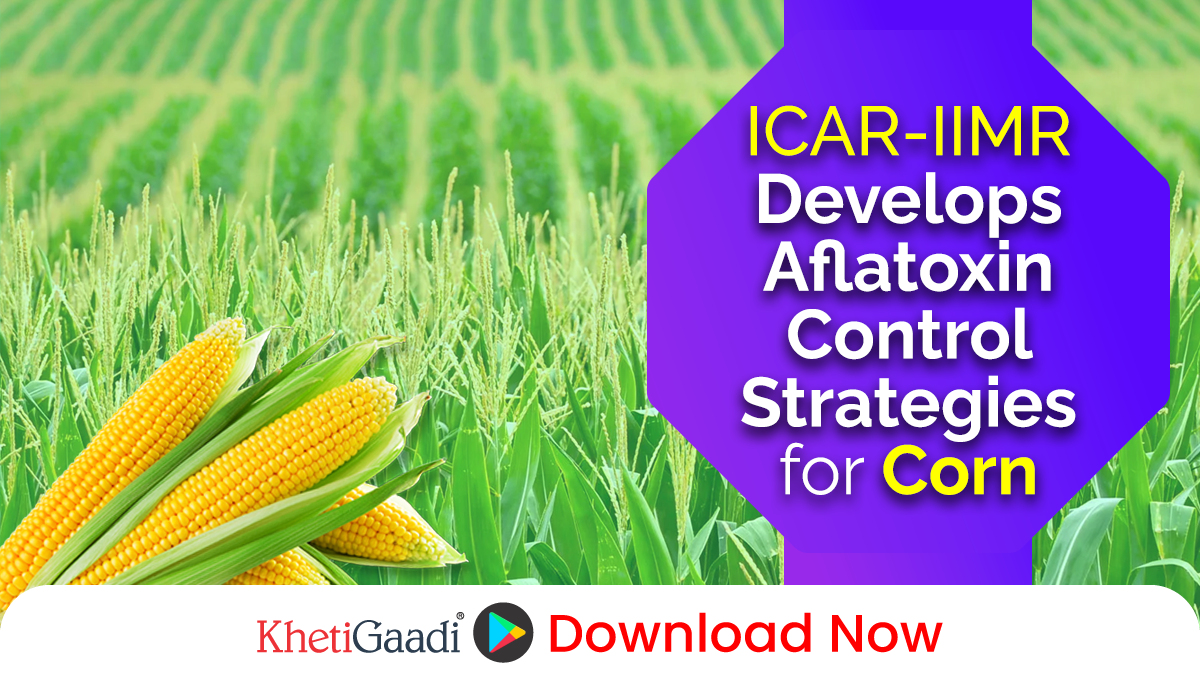ICAR-IIMR Develops Strategies to Tackle Aflatoxin Contamination
With the increasing use of maize in ethanol production and animal feed, controlling the harmful chemical aflatoxin—a toxin produced by fungi under high-moisture conditions—has become a critical priority. Aflatoxin poses severe health risks, including cancer, prompting the Indian Council of Agricultural Research – Indian Institute of Maize Research (ICAR-IIMR) to take proactive measures.
KhetiGaadi always provides right tractor information
The Ludhiana-based Maize Research Institute has devised methods to reduce aflatoxin levels in maize to the permissible limit of 20 parts per million (PPM) through advanced technology and improved post-harvest management. However, the institute has emphasized the need for additional funding to implement these measures effectively.
Maize: A Crucial Component in Ethanol and Animal Feed
Maize is a major raw material for ethanol production and forms a key ingredient in animal feed. Alongside other dry grains (DDGS), it is extensively used by distilleries and feed manufacturers. The growing demand for maize has raised concerns over aflatoxin contamination, which can affect animal health and, subsequently, human health through the food chain.
For personalized advice on improving your cultivation yield through organic methods, reach out to a KhetiGaadi counsellor at 07875114466 or email us at connect@khetigaadi.com.
Reducing Aflatoxin Levels: Technological Interventions
The Maize Research Institute has highlighted several measures to control aflatoxin contamination, including:
- Host Plant Resistance: Developing maize varieties that are resistant to aflatoxin-producing fungi.
- Agricultural Management at Source: Implementing proper farming practices to limit fungal growth during cultivation.
- Improved Storage and Transportation: Reducing moisture levels and ensuring proper handling post-harvest to inhibit fungal growth.
Innovative Solutions: Fractionation and Protein Enhancement
The institute is also exploring fractionation technology, which can effectively separate maize components to reduce aflatoxin levels. Additionally, increasing protein levels in DDGS (a byproduct of ethanol production used as animal feed) has been identified as a potential method to mitigate aflatoxin risks.
Guidelines and Regulations Needed
Agricultural scientists and industry experts have called for mandatory guidelines to regulate aflatoxin levels in animal feed. Recommendations include limiting the inclusion of DDGS to a maximum of 10% in animal feed to ensure aflatoxin levels remain below 20 PPM. These measures aim to protect animals and prevent the toxin from entering the human food chain through milk and meat products.
Call for Support and Collaboration
While ICAR-IIMR has developed the necessary technologies, its implementation requires financial and policy support from the government and private stakeholders. With proper funding and adherence to guidelines, India can address the challenges posed by aflatoxin contamination in maize, safeguarding public health and ensuring sustainable use of maize in ethanol and feed production.
As maize continues to play a vital role in ethanol and animal feed industries, proactive measures to control aflatoxin are essential. The efforts by the Maize Research Institute mark a significant step toward ensuring food safety and maintaining the quality of agricultural produce in India.
Stay updated with real-time information on agricultural schemes and innovative practices by following us on WhatsApp or visiting KhetiGaadi’s website regularly.
To know more about tractor price contact to our executive






